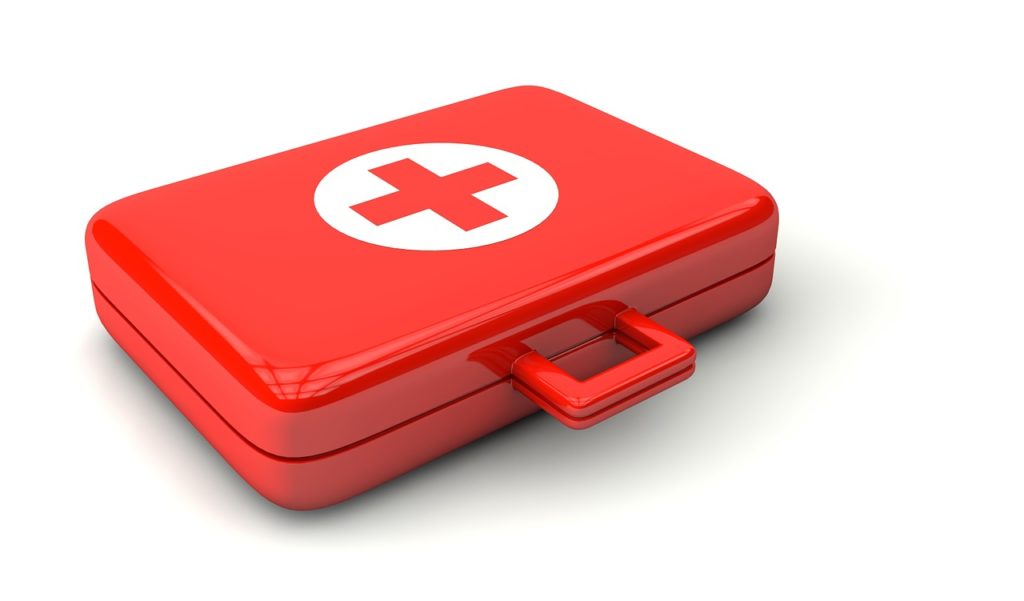Doctors Explain Exactly What to Do When a Cut Won’t Stop Bleeding
February 13 2019
We’ve all been there – maybe you sliced the tip of your finger instead of the avocado, nicked yourself shaving, or got swiped at by a feisty cat. Even the smallest of cuts can bleed excessively, and you should never ignore a bleeding cut, no matter its size.
How to stop a minor cut from bleeding
The following tips apply to relatively mild injuries. If blood spurts out of your cut, you have an abdominal or chest wound, or bleeding is so severe that it pools on the ground or soaks through your clothes, then call 000.
First, wash your hands
If the cut is small, first head to the nearest sink and wash your hands to prevent spreading infection to the open wound. However, if your wound is very large, you’ll want to start applying pressure immediately.
Then, apply pressure
This is the most important step when you have a cut that won’t stop bleeding. “Apply constant pressure for several minutes to allow natural clotting to occur,” explains dermatologist Dr Joshua Zeichner.
Use a clean cloth or bandage and gently press on the wound. “Unless someone has a bleeding disorder, applying pressure for 10 to 15 minutes, at most, should be effective. If that doesn’t work, they should be seen by a provider,” says osteopath Dr David Brill.
Think twice before you try any home remedies
You may have heard about alternative remedies for helping a wound stop bleeding – usually, these involve placing ingredients like paprika, bentonite clay, or coffee grounds on the cut to help the blood clot. “Paprika has high concentrations of iron, which likely explains its use as a natural treatment to stop bleeding,” says Dr Zeichner. Bentonite clay and coffee grounds also contain properties that may constrict blood vessels and skin tissues to promote clotting. That being said, it’s impossible to know whether these methods are truly sterile. If you do use one of these ingredients, it’s crucial that you still clean and disinfect the wound afterward.
What to do when the bleeding stops
After the bleeding has stopped, you’ll want to take a closer look at the wound, analyze the damage-is there any dirt lodged inside?-and then clean it. “It is important that the area is thoroughly cleaned,” says Dr Zeichner.
Clean your cut thoroughly with soap and water-and tweezers, if necessary
Run the wound under some water and gently wash the area around it with gentle soap – but try not to get soap directly in the wound, according to the Mayo Clinic. Make sure you’ve removed any dirt and debris that might’ve gotten into the wound, using tweezers if you have to. If there’s anything you can’t remove yourself, you’ll want to see a doctor for assistance.
Apply antibiotic ointment
When the wound is clean and no longer bleeding, it’s time to start the healing. “It’s important that you are applying antibiotic ointment to the wound after it stops bleeding to prevent an infection,” says Dr Zeichner. This helps keeps the cut moist and protected.
Dress the wound
Smaller cuts and scrapes can stay uncovered after you’ve applied ointment, but if your wound is larger or you feel like you need extra protection, you’ll want to place a bandage or gauze held with tape over the cut. Be sure to change the dressing at least once a day until the cut is completely closed up and healed.
Get a tetanus shot
If the wound is deep or dirty, consider getting a tetanus shot if you haven’t had one in the past five years, according to the Mayo Clinic. This will help prevent infection and serious illness.
Finally, keep an eye on your cut as it heals
If you follow all these steps, chances are your wound will heal up normally over the next week or two. However, you should stay alert for any signs of infection, like redness, warmth, tenderness, drainage, or swelling around the cut. If you think the cut could be infected, see your health provider ASAP.
Article originally appeared on Prevention.
